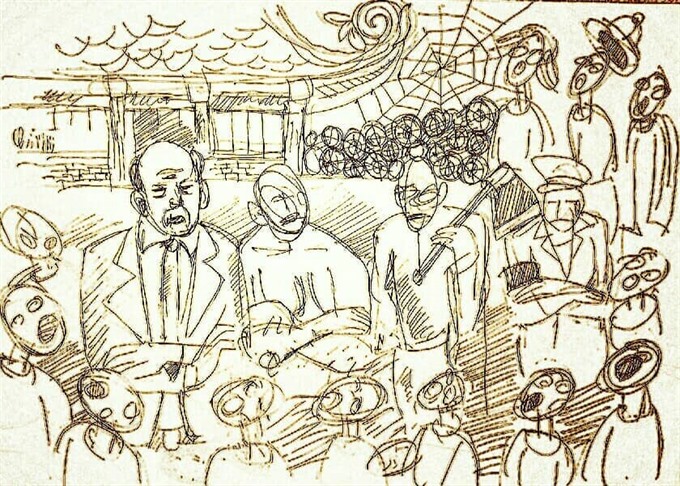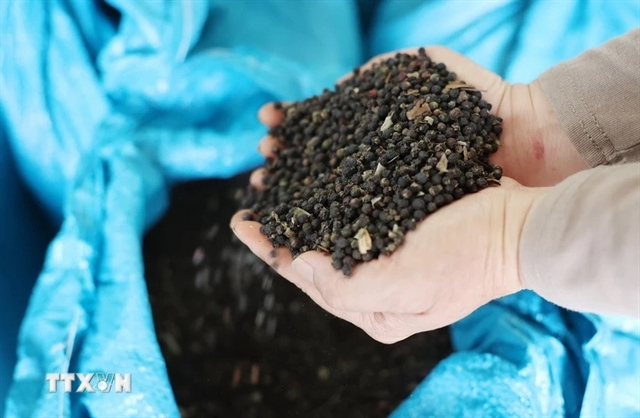 Talk Around Town
Talk Around Town

Many people are upset that a 300 -year-old communal house in a Hà Nội’s suburb has been ruined. The reason? Careless restoration.
 |
Bích Hường
Just a few days after a national workshop to judge the country’s progress towards protecting cultural heritage, anger is brewing.
Many people are upset that a 300-year-old communal house in a Hà Nội’s suburb has been ruined. The reason? Careless restoration.
The Lương Xá Communal House in Liên Bạt Commune, Ứng Hòa District was said to vividly feature architecture of Lê Trung Hưng Dynasty (The Later Lê Restoration from 1533 to 1789) - a distinction current in Vietnamese historiography.
Since 2001, its condition has deteriorated, despite some minor restorations.
Head of Lương Xá Residental Group Phạm Tự Khải said that until last year, the communal house degraded so badly that there were fears it may actually collapse.
The community came together to raise cash to restore the property, with local families each donating VNĐ800,000 (US$34.3), with two major donors chipping in with VNĐ4 billion.
But when Vietnam News Agency reporters visited the house earlier this week, they discovered a construction site overflowing with bricks, cement and steel.
And to their dismay, original wooden structures had been replaced with cement.
Deputy Director of Hà Nội’s Culture and Sports Department Trương Minh Tiến said the dismantling and rebuilding of the ancient property was a violation against Law on Cultural Heritage as Lương Xá Communal House was a historical cultural relic.
“Restoration of historical and cultural relics must follow compulsory scheme and ensure to maintain historical cultural values,” he said.
However, an official from Ứng Hòa District’s Culture Department said they informed Liên Bạt Commune and Lương Xá Hamlet about the plans but their information was ignored.
Nguyễn Đức Bình, head of Đình Làng Việt (Vietnamese Communal House), a group of history lovers wants to help popularise the structures’ cultural and aesthetic values, said what has happened is a destruction of the past and a destruction of heritage.
He said the house itself was the essence of sculpture art and has been ruined by the renovations.
At the national workshop on cultural heritage protection held last Friday, PM Nguyễn Xuân Phúc said: “When we lose a heritage or just part of the heritage, we fire a bullet to the past and lose national identity.”
Phúc also pointed out that many heritage sites have been modernised and deprived of their unique features. Policies supporting folk artists have been implemented slowly. The role of the people in preserving and developing heritages’ values has still been limited.
Bình reminded us of the words of art critic Nguyễn Quân in 2015 who spoke at a conference titled “Communal houses in the north – Lost and left”.
Quân said that “Without restoration, [communal houses] die slowly, with restoration, they die immediately.”
Bình said that Quân’s remark was a perfect sum up of what has happened at Lương Xá.
“Hasty careless restoration, especially without proper understanding, destroys heritages,” Bình said.
Hà Nội’s Relics Management halted the construction and Hà Nội People’s Committee is expected to announce solutions next month.
Bình said it was urgent to have policies in place to prevent a repeat of what has happened.
Resident Nguyễn Hạ Lẫm said that locals wanted to restore and save the old communal house, not to have a new one.
Another resident Phạm Thị Tuyền said that she wanted the communal house to be restored so that people could continue gathering there for community’s affairs.
“We don’t want cement structures to replace the old wooden ones. It has damaged both architectural and spiritual values,” she said.
Communal houses appeared in Việt Nam in the 16th century and developed strongly late 17th century and early 18th century. At that time, Việt Nam had about 11,800 villages, each of them have different communal house, pagoda and temple system with a number of statues and decorative items.
The communal houses combine the role of a village meeting-room and a place of worship.
Communal houses could be a pride of local people and a place where visitors could learn much about local culture and life.
With their values in culture, spiritual, architecture, sculpture and community life, communal houses must be preserved as long as possible.
The older it is, the more we could learn from it. It’s so sad to know that despite having a law to protect the heritage, relevant agencies often act too slow. — VNS




